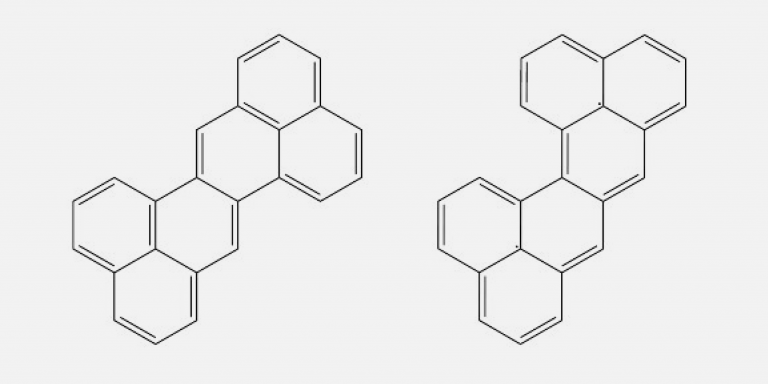
Benzenoids are a sub-family of hydrocarbons (molecules composed only of hydrogen and carbon atoms) whose carbon atoms form hexagons. The electronic properties of these molecules, notably their conductivity and magnetism, suggest that they could be used in nanoelectronics, but their synthesis is complex. To solve this problem, a team of researchers from the Institute of Molecular Sciences of Marseille and the Computer Science and Systems Laboratory (CNRS/Aix-Marseille University) has developed an application that allows, regardless of the number of cycles, to generate all the structures associated with a property sought. The research: ” BenzAI: A program to design benzenoids with defined properties using constraint programming” has been published by the ” Journal of Chemical Information and Modeling”.
Benzenoids are members of the PAH (polycyclic aromatic hydrocarbon) family. PAHs are hydrocarbons whose carbon atoms form rings of different sizes. They are the subject of numerous studies in different fields (organic synthesis, molecular nanoelectronics, interstellar chemistry…) because of their energetic stability, their molecular structures or their optical spectra. Their physico-chemical properties depend on their size and structure.
Thus, the electronic properties of benzenoids, molecules formed by hexagonal carbon rings fused in a honeycomb structure, depend on the way these hexagons are arranged in the structure. Being able to predict the electronic properties according to the arrangement that the hexagons can take would allow the chemist to direct his syntheses towards relevant systems.
It is thus necessary to generate all the possible arrangements of the N hexagons which constitute it and to predict the properties of each of them to retain only the relevant systems in nanoelectronics, and this for each family of benzenoids. If the task is simple when N is small (3 solutions for N=3), from N=7, a computer processing becomes essential.
The BenzAI software
Yannick Carissan and Denis Haguebaum-Reignier from the Institut des Sciences Moléculaires de Marseille and Nicolas Prcovic, Cyril Terrioux and Adrien Varet from LIS, Laboratoire d’Informatique et Systèmes (CNRS/ Aix-Marseille University) are the researchers of the team. They have developed BenzAI, a free and open source computational software, which allows to :
- generate benzenoid structures on the basis of several criteria (number of hexagons/carbon atoms/hydrogen atoms, structural properties, presence or absence of one or more motifs, etc.)
- analyze their electronic structure,
- provide infrared spectra stored in an external database.
BenzAI will thus make it possible to sort out the molecules of interest that will possess the desired properties once inserted into devices.
This approach based on PPC (Programming by Constraints) will allow synthetic chemists to focus their efforts on relevant systems such as molecular magnets for information storage.
Link to download BenzAI, free software:
https://benzai-team.github.io/BenzAI/
Article sources:
Adrien Varet, Nicolas Prcovic, Cyril Terrioux, Denis Hagebaum-Reignier and Yannick Carissan
BenzAI: A Program to Design Benzenoids With Defined Properties Using Constraint Programming
Journal of Chemical Information and Modeling
Translated from Générer des structures de benzénoïdes grâce à l’intelligence artificielle









